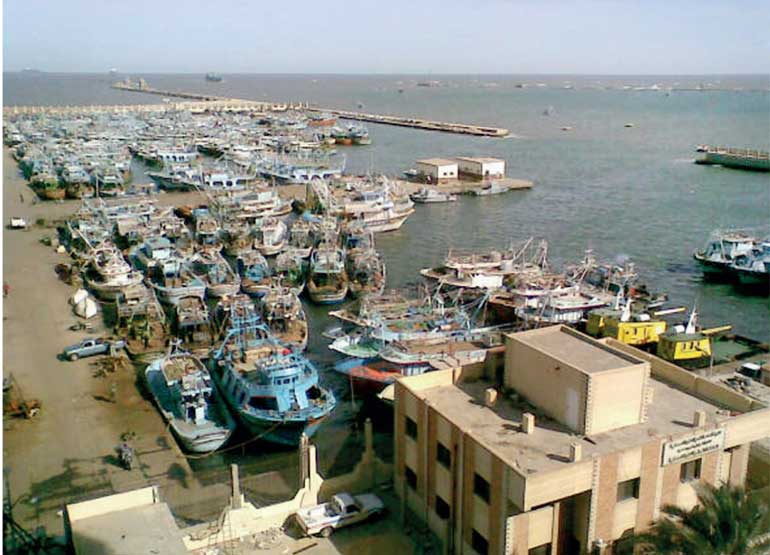Thursday Jan 09, 2025
Thursday Jan 09, 2025
Monday, 23 January 2017 00:22 - - {{hitsCtrl.values.hits}}

Forbes.com: Last Wednesday, January 18th, Sri Lanka’s minister for regional development, Sarath Fonseka, told journalists at a conference in New Delhi that terms were being discussed to give Sri Lanka’s northeastern Trincomalee port to India. Sri Lankan Prime Minister Ranil Wickremesinghe reportedly vouched for the veracity of the remarks on the sidelines of Davos. But by Friday India was denying them, stating that they had no interest in taking on a fledgling port that wouldn’t be profitable for a very long time.
Sri Lanka, an island nation at a strategic location in the Indian Ocean, has gotten into the habit of offering its sea ports to larger economic powers who have the financial clout to properly develop them. The talk about Trincomalee port being developed by India was intended to be a geopolitical counterbalance to Sri Lanka recently handing over of 80% of its Hambantota port to China for 99 years – a move which New Delhi wasn’t particularly enamored with.
Sri Lanka is currently attempting to stem the momentum of becoming viewed as a Chinese outpost of progress. In addition to the new Hambantota port going to China, plans are underway for China to be given a long-term lease on 15,000 acres of land in Hambantota for an industrial zone, a $1.4 billion, 269-hectare new financial district is being built by a Chinese company with Chinese money in Colombo (110 hectares of which will be granted to China for 99 years), and Colombo’s South Container Terminal is a 35-year Build-Operate-Transfer (BOT) arrangement with China Merchants Holdings, the same company that’s taking over the Hambantota port. In addition to this, China currently owns over $8 billion of Sri Lanka’s debt, putting the country at its mercy to an even higher degree.
Being located right next to one another and sharing common historical ties, Sri Lanka and India have always enjoyed close political and economic relations. However, this close relationship has recently been getting strained, as Sri Lanka’s buddying up with China has not sat well with New Delhi, who feels their influence in their own region waning as China encroaches on all sides with major development projects in Bangladesh, Myanmar, the Maldives, and Pakistan, in addition to Sri Lanka.
For China, Sri Lanka is a vital part of its broader international ambitions. The island nation is strategically positioned right between China and its Middle Eastern energy suppliers, and has been positioned as a key financial, administrative, and logistical hub on China’s 21st Century Maritime Silk Road, which seeks to build a string of Chinese-directed maritime operations from Asia to Europe.
Trincomalee port, which was initially developed during WWII as a base by the British Royal Navy, has the deepest natural harbour in all of South Asia and boasts ten times the amount of water and land reserves as Colombo port. However, the full economic sap has yet to be extracted from this place, as it is currently only a smallish port that is being used for the shipment of local commodities, like flour and cement, as well as some random bulk cargo. The ambition here is to develop Trincomalee harbour into a major deep sea port in a region that is currently in need of them, as well as a 175 square kilometre luxury tourism zone. The problem is that Sri Lanka is currently in a severe debt crisis and doesn’t have the money to carry out this project on its own, so they’ve been pursuing potential international investors to step in where they fall short – which is where India comes in.
The offer of Trincomalee port to India was a move designed to offset India’s very outspoken reservations about the amount of Chinese economic and political power that is being consolidated right off their coastlines. To salve India’s fears that some of these Chinese projects could someday have military implications, Sri Lanka attests that they are not partial to any one country in particular when it comes to investment and are willing to do business with a wide array of potential suitors – be they from India, the USA, Japan, Singapore, or China. India was never overtly excluded from any major Chinese-led development project in Sri Lanka, and for some, such as Colombo Financial City, the Hambantota port, and the projected Hambantota industrial zone, they have actually been invited in.
While India has shown inclinations to invest large amounts of money in Sri Lanka — just a few months ago India’s Commerce and Industry Minister Nirmala Sitharaman announced that they would be pumping $2 billion into Sri Lankan infrastructure development – they haven’t exactly jumped right in to make good on this offer. India has its own infrastructure challenges at home, they have a dire need to modernise their own ports, and taking on Sri Lanka’s port at Trincomalee does not appear to be on their near-term to-do list.